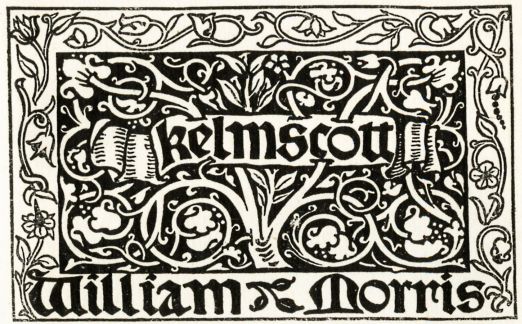
(Rare Books, RB821.86 MOR)
In the Nineteenth Century, book-making became an industrialised process: hand-made rag, or linen, laid paper was replaced with wove paper, often made from wood pulp; hand presses were replaced with steam-powered rotary presses. Improved literacy levels and the rise of the middle classes created a demand for cheap, mass-produced books. One reaction to this was the establishment of private presses which typically focussed on a return to traditional craftsmanship, creating books which were typographic works of art and which were issued in small print runs.
One such private press was the Kelmscott Press of William Morris, established in January 1891. The last book to have been printed at the Kelmscott Press was A Note by William Morris on his aims in founding the Kelmscott Press together with a short description of the press by S.C. Cockerell, & an annotated list of the books printed thereat (1898). In it, Morris describes his admiration of fifteenth-century books, which he observed “were always beautiful by force of the mere typography, even without the added ornament, with which many of them are so lavishly supplied [e.g. illumination and pen-work flourishing]”.
Morris favoured linen paper, with subtle chain lines, modelled on an example of Bolognese paper from 1473. He designed a Roman fount along the lines of that designed by fifteenth-century Venetian printer, Nicholas Jenson, and followed the types of Gothic fount that were used in the first 20 years of printing, such as that of Gunther Zainer at Augsburg. Morris was also concerned that any decoration be in harmony with the pages of type.
This book, A Dream of John Ball, was published by the Kelmscott Press in 1892. It is a small quarto, printed in black and red, with embellished capital letters. The woodcut illustration you see here was designed by Edward Burne-Jones, who illustrated many Kelmscott Press books; Morris designed the borders around the text. The Philip Robinson Library copy is one of 300 paper copies, which were sold by Reeves & Turner. The text block has been sewn and bound in limp vellum.

(Rare Books, RB821.86 MOR)
